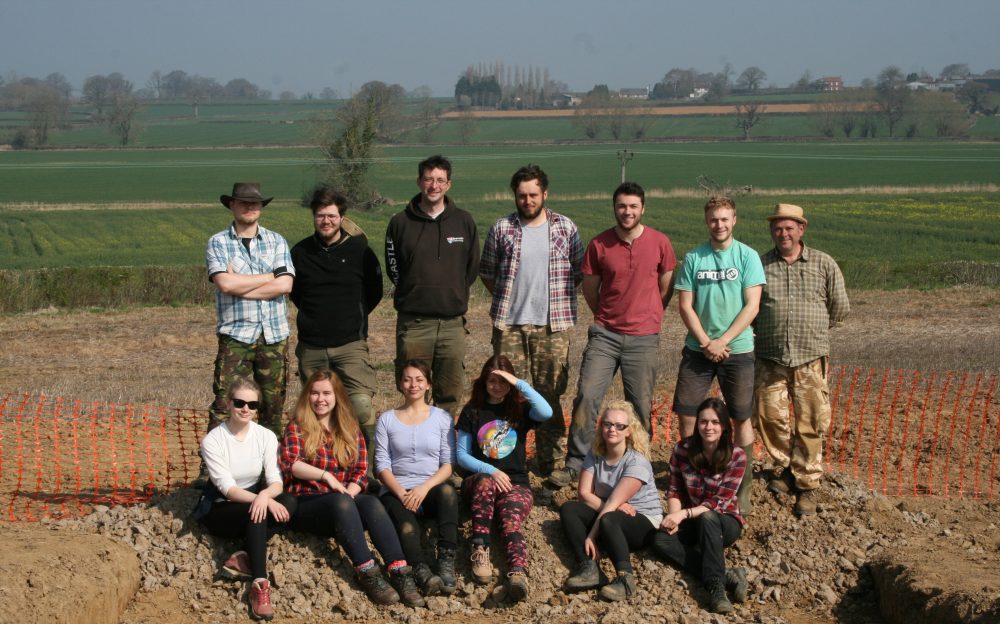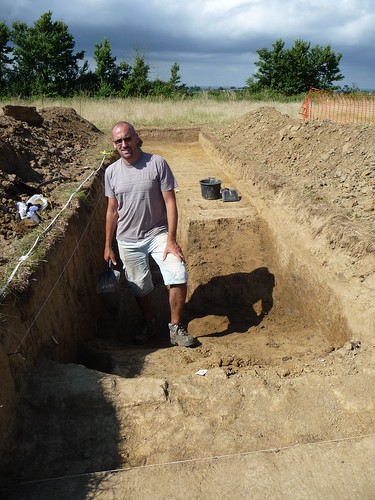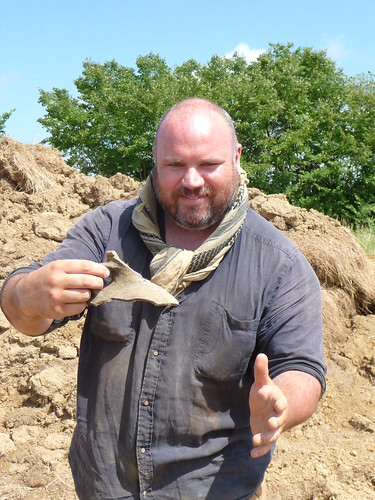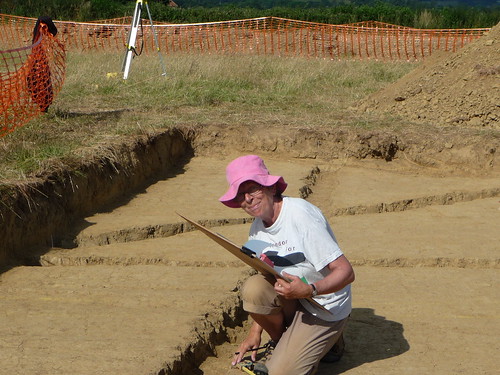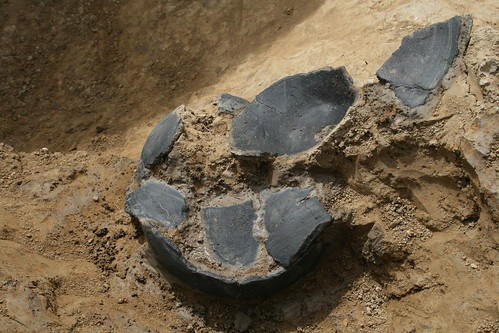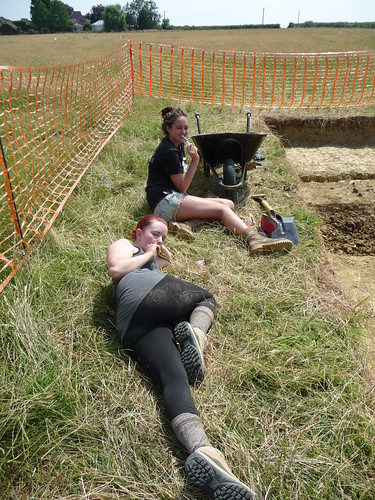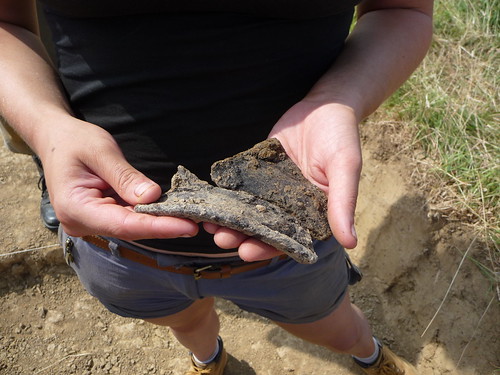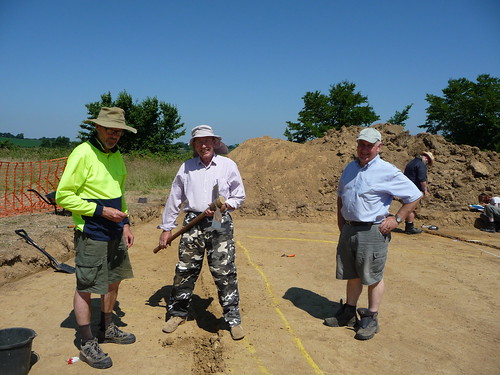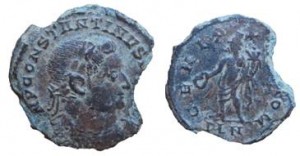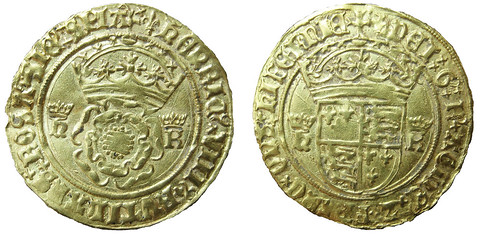It rained heavily overnight, so the team started by trowelling back trench C in a bid to make light of the unusual features that we first saw when machine watching at the beginning of last week.
After yesterday’s excitement, Lucy had to start drawing a section of her ditch – not before extending it to the east in an attempt to better understand its relationship to the Iron Age ditch which runs through both trenches. With El and James’ help, she found an interesting pit on the western limit of excavation and some Black Burnished Ware to the east.
Johanna dug a post hole with a post pipe in it and uncovered some sherds of pottery which will hopefully help the team understand its relationship to Danni’s post hole and beam slot, if indeed there is one.
Danni continued excavating her feature and found what she believes to be another post hole containing some more Black Burnished Ware.
Sally – our site director’s wife who was visiting for the day – excavated the second half of the charcoal-filled pit that Johanna had started last Friday and uncovered the first bone fragments of the season! Could it be a cremation pit or just a domestic fire pit?
Georgia, at the south end of the trench, dug a slot through a ditch which runs parallel to the one she excavated last week with Danni, and found a single sherd of pottery.
Over in trench B Pete, Peter and Mary continued excavating and recording a linear of uncertain datem but later than the southern ditch. Cubby and Dave outdid Lucy’s finds from yesterday – the guys were excavating a Roman ditch, trying to follow a dog-legged linear when they came across the top of a Roman flagon with intact handle! The excitement was so much that we had to break for tea early…
Just a couple of reminders to everyone: today we got a page spread in the Western Gazette so buy yourselves a copy if you can, and please pop down to site on Saturday for our Open Day (10am-4pm) or to James’ talk in the evening if you’re interested in checking out the archaeology for yourselves.
Last but by no means least everyone would like to say a special ‘THANK YOU’ to Min, James and Sally’s 6-year old daughter, for all her hard work and help today – she was an absolute gem and a perfect little archaeologist!
